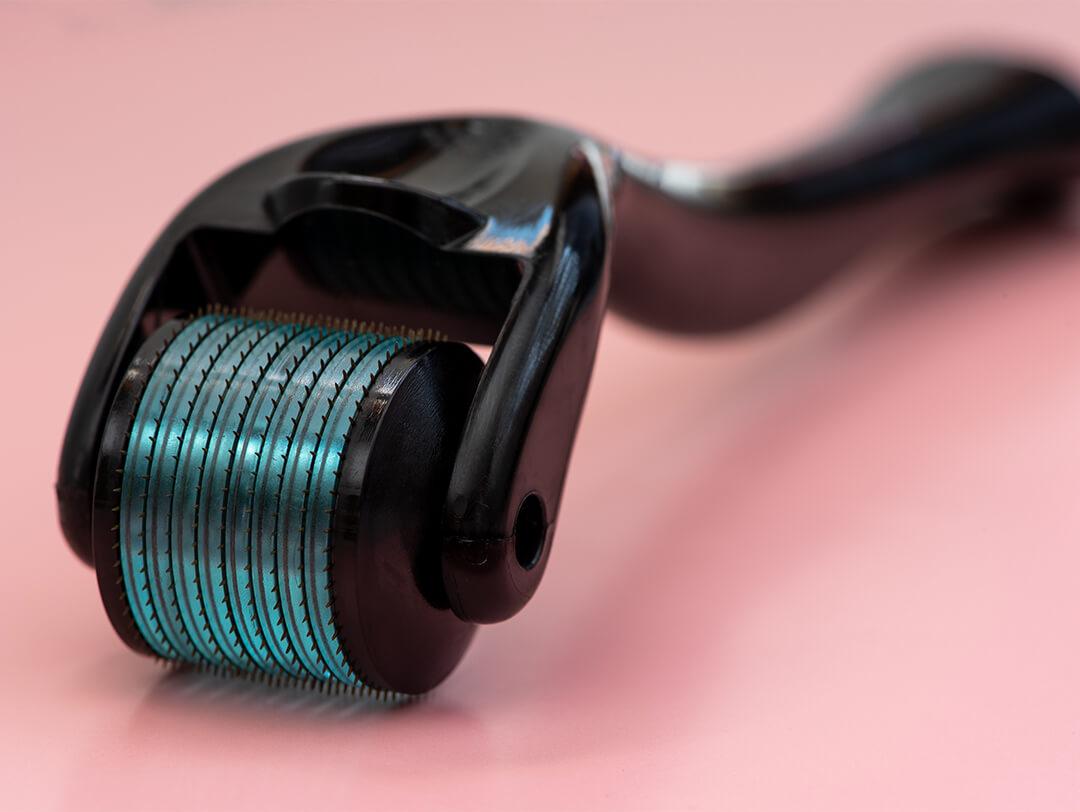Microneedling Might Just Be The Skin Savior You’ve Been Looking For



Kate Foster Kaplove


Quality is better than quantity when it comes to friends, accessories… and apparently, your skincare. Case in point: We all naturally have the proteins collagen and elastin in our skin, which promote that dewy, smooth, youthful look we all lust after. But as we get older, their quality degrades, and we start to get fine lines, larger pores, and sagging. Sigh.
You’ve probably seen lots of collagen supplements on the market that claim to reverse these issues, but oftentimes the science behind them is unconvincing at best. Thankfully, there’s a treatment out there that helps boost the quality of your elastin and collagen production with little to no downtime: microneedling. Continue reading below for everything you need to know about the benefits of microneedling and more.


It's about glam time you treated yourself.
So, What Is Microneedling?
If you’ve ever quickly scrolled past a scary-looking photo of a handheld roller with tiny needles all over it on Instagram, no, that wasn’t a medieval torture device. It was a dermaroller, or the most popular tool for microneedling. And, no, it’s not nearly as terrifying as it looks.
“Microneedling is a process whereby very sharp, fine needles are inserted into the skin to, in essence, interrupt the underlying collagen and elastin in the skin,” says dermatologist Michael H. Gold, MD. “The skin then utilizes its natural ability to heal that damaged skin to create new collagen and elastic tissue as an end result.” Not only does the treatment fight signs of aging, it’s also extremely effective for treating acne scars and other skin conditions or texture issues (like stretch marks and large pores).
How Does a Microneedling Procedure Work?
According to Dr. Gold, there are three different variations of needling: rollers, pens, and radiofrequency (RF) microneedling. Rollers are available for at-home and in-office use, but at-home versions will have shorter, finer needles. “They literally roll very superficial needles over the skin and are useful for minor corrections of fine lines and scars,” says Dr. Gold.
Pens and radiofrequency microneedling should only be administered by a doctor. “The pens are used with more of a stamping method, with mechanical insertion of the needles into the skin to more dramatically improve scars and wrinkles,” says Dr. Gold. Finally, radiofrequency microneedles—like the Lumenis Legend Pro device Dr. Gold uses—emit RF currents as they’re mechanically inserted into the skin. Radiofrequency triggers more drastic regeneration of collagen and elastin fibers, making this the most effective of all the microneedling methods.
Many people describe the feeling as similar to pin pricks, and your doctor will most likely apply a topical numbing cream prior to the treatment. Some also add a soothing mask or serum to tame redness and swelling afterward. You can expect to head home or back to work after an hour or two, depending whether the topical anesthetic is applied.
How Much Does Microneedling Cost?
At-home dermarollers run for as little as $30, but keep in mind you’ll need to factor in replacement rollers every 10 to 15 uses, or when the needles start to become dull. “Needling pen treatments usually cost about $200 to $400 dollars per treatment, and RF needles tend to be even more expensive, as it is more advanced technology,” says Dr. Gold.
A series of treatments are needed for optimum results, says Dr. Gold. The number of appointments you’ll require will depend on your skin concern and how advanced your wrinkles and/or scarring are.
What Can You Expect?
One of the best things about microneedling is the immediate results you’ll see: The inflammation and superficial swelling make your complexion appear plump and luminous for up to a few weeks.
“Long-term, wrinkles can improve, scars can improve, and with the RF needles, one can also see some tightening of the skin,” says Dr. Gold. Of course, the more treatments you receive, the more dramatic the results.
Are There Any Side Effects?
With the rollers and pens, don’t be alarmed if you see a little blood—this is completely normal. Swelling and redness can last for several days, depending on the needle length.
“With any cosmetic procedure, adverse events can always occur, so that is why going to a skilled provider is a must,” says Dr. Gold. “There are slight risks of scarring, hypo- and hyperpigmentation, and infection. They are rare, but can happen.”
Have you ever tried microneedling? What were the results like?
Want in on all the Glam Bag fun? Take our Beauty Quiz now to get started. And don’t forget to check us out on Instagram and Twitter @IPSY.
Liked this post? Share!
Related Stories


Skin
How to Adjust Your Skincare Routine for Mature Skin in the Winter
Published on Dec 4, 2025 • 7 min read


Skin
Meet the Best Moisturizers for Winter, According to Dermatologists
Published on Dec 1, 2025 • 9 min read


Skin
What Is Inflammaging—and Why Everyone’s Talking About It
Published on Dec 1, 2025 • 8 min read


Skin
6 Skincare Trends to Have on Your Radar in 2026, According to Experts
Published on Dec 1, 2025 • 7 min read


Skin
We Grabbed Our Crystal Ball and Found These 6 Skincare Predictions for 2025
Published on Dec 10, 2024 • 7 min read


Skin
Simple Self-Care Tips That Actually Make a Difference
Published on Nov 13, 2025 • 12 min read


Skin
These 9 Face Scrubs Will Unlock Soft and Smooth Skin on Contact
Published on Nov 5, 2025 • 10 min read


Skin
10 Thanksgiving Foods That Will Have Your Skin Coming Back for Seconds
Published on Oct 15, 2025 • 7 min read


Beauty Picked Just for You
Get 5 products worth up to $70
Plus exclusive access to epic deals up to 80% off
Starting at just $14/month. Cancel anytime.